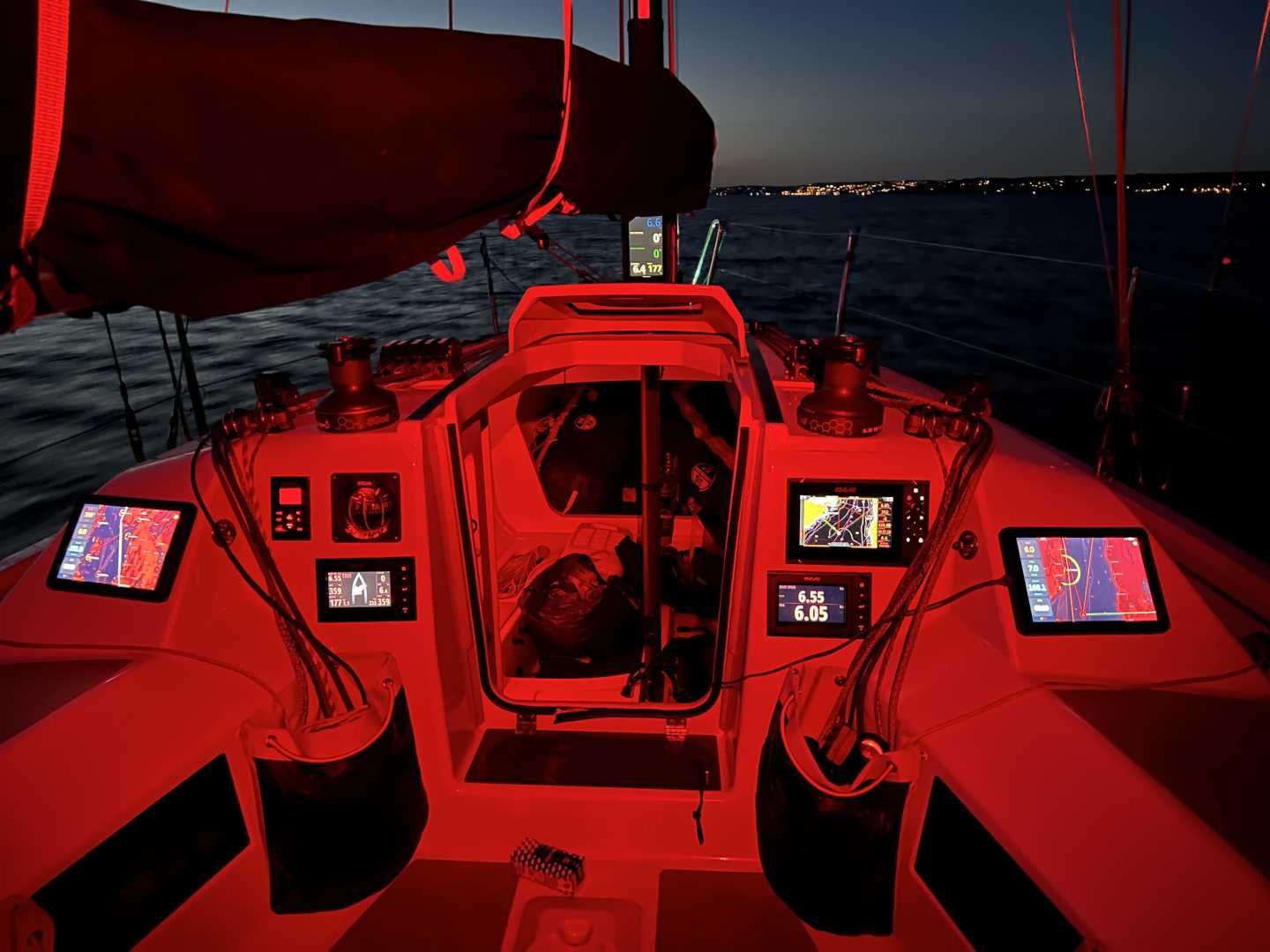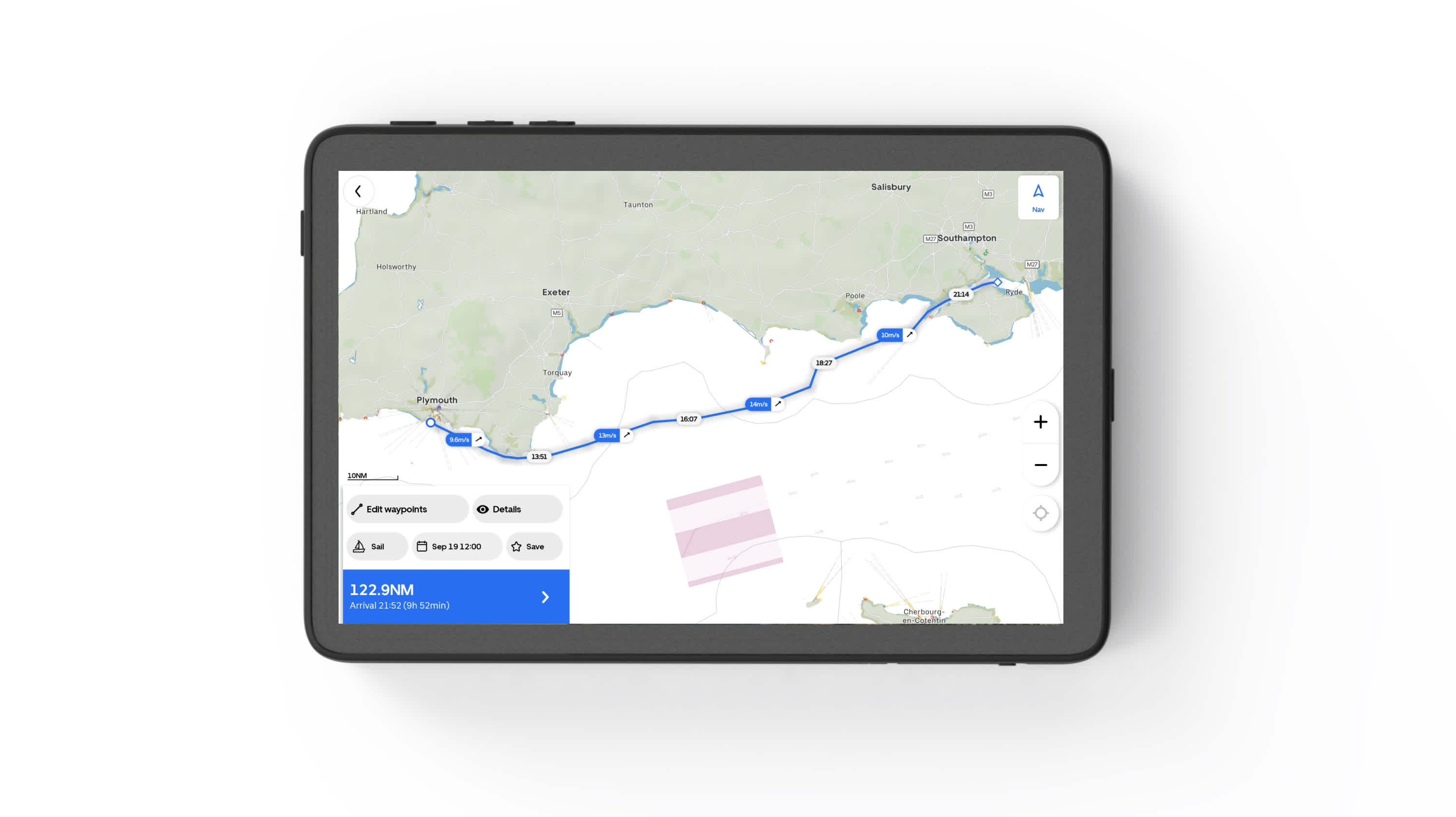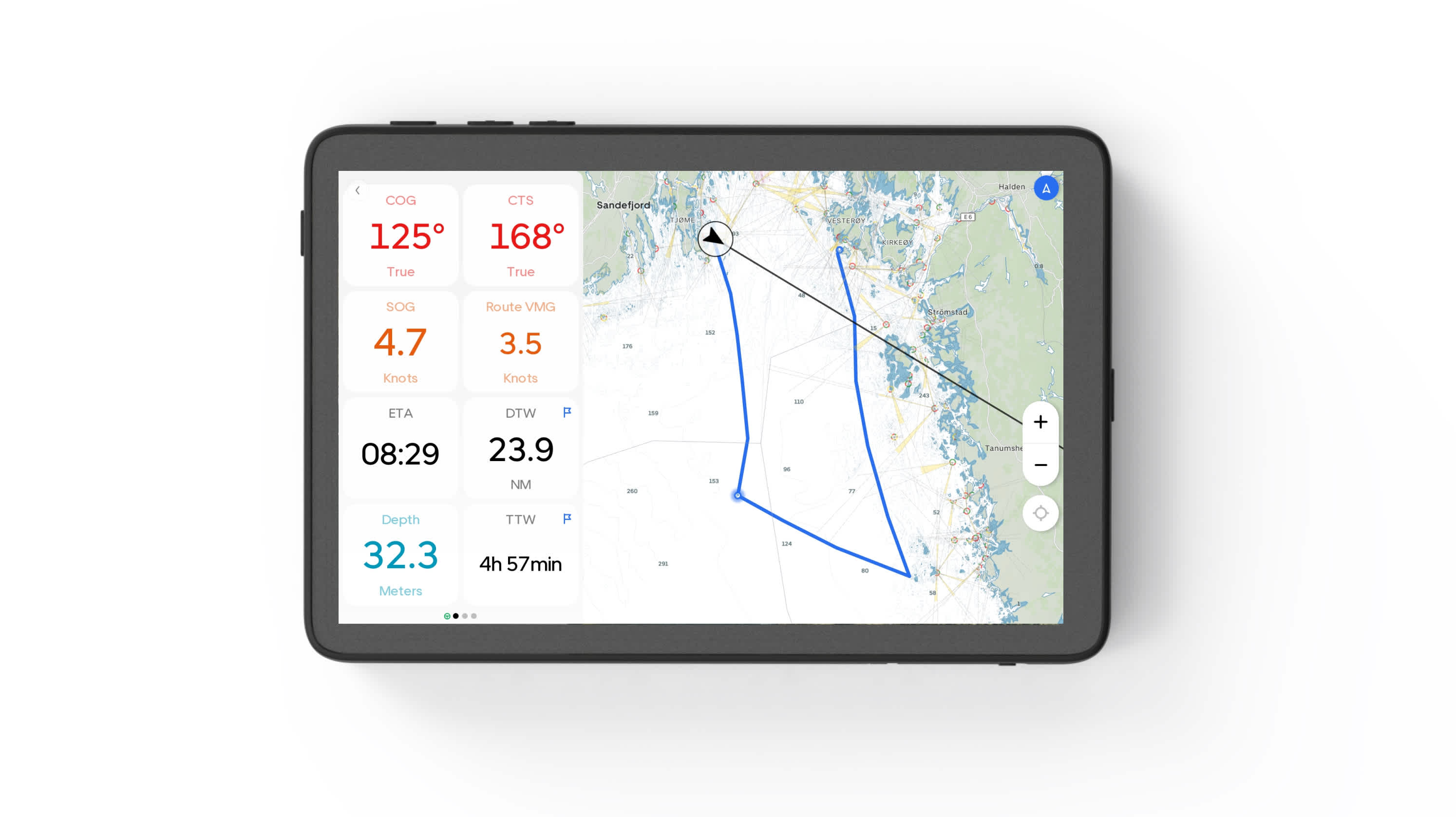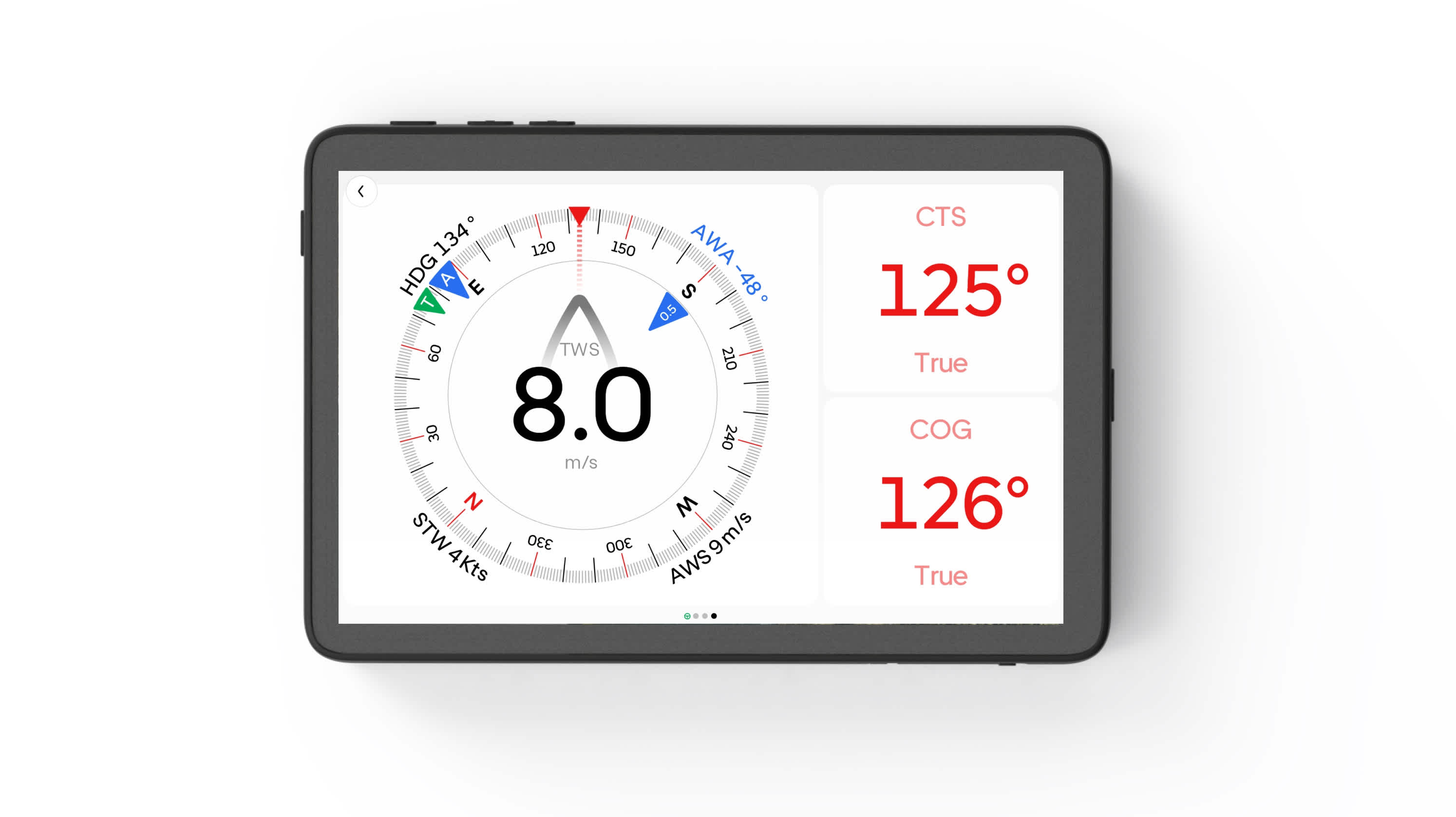All Articles
Introducing new navigation instruments
September 17, 2023 • 3 min read
Sail faster with accurate data and better situational awareness.

Sailing is an incredibly complex sport, and sailing really well is challenging, even for the most seasoned sailors. This is one of the reasons why modern sailing has become so metrics-oriented.
Orca is built to help you make better decisions. With Orca, you’ll quickly understand how well you are sailing, adjust to changing conditions, and optimize your performance.
Orca already delivers an advanced sailing processor for more reliable wind data and polar performance instruments that help you understand how well you are sailing compared to your boat’s theoretical optimum.
This week’s release adds a new set of navigation instruments and a new routing concept that makes navigation a whole lot easier.
The new navigation experience
This week’s release introduces four new navigation instruments, and a new navigation concept in Orca: Waypoints along your active route.
Orca is the only primary navigation with automatic routing and automatic sail routing. Where legacy chartplotters treat routes as a series of legs that you have to define manually, Orca creates incredibly granular routes based on the weather forecast and your boat’s performance profile.

Downwind sailing from Plymouth to Southampton. Orca's sail routes do multiple course corrections to find the best wind and tide conditions.
Because these routes are so granular, Orca needs a different approach to both waypoints and navigation instruments. In Orca, a waypoint is defined as the following:
Any waypoint you manually add when you create your route
Any turn sharper than 30 degrees created by the route engine
The design intent of this approach is to designate waypoints as meaningful points along your route. With the new waypoint system comes a range of new navigation instruments that make navigation easier.
The new instruments can be found in the Active Route section.
The new navigation instruments are:
DTW (Distance to Waypoint): The route distance from your current location to the next waypoint
TTW (Time to Waypoint): Distance to waypoint divided by your Speed Over Ground – based on your average speed over the last minute
Route VMG – Velocity made good along your route. This is your Speed Over Ground component in the direction of the closest location along your route.
Course to Steer: This is the Course Over Ground (COG) you need to maximize your route VMG
The seasoned boater may notice that all of these instruments behave differently from traditional systems.
DTW and TTW
DTW and TTW are traditionally calculated from the direct distance between your current location and the next waypoint. This approach does not work when sailing upwind – or downwind if you have a boat with a shallow run angle. To fix this, Orca uses the route distance to your next waypoint, which takes into account your beat and run angles when calculating DTW and TTW.
Route VMG
Route VMG replaces the traditional Waypoint VMG. In traditional plotters, you usually set a single waypoint representing your downwind target – and you’ll optimize your VMG sailing toward that target without considering forecasted wind changes. This makes VMG sailing over longer distances hard as you need to deviate from your plotter’s route to catch the best wind.
Because Orca has built-in sail routes, Route VMG in Orca also accounts for forecasted wind changes. This means that by optimizing your Route VMG, you optimize for the fastest path to your destination instead of the shortest distance.

Route VMG combined with Orca's Sail Routes accounts for forecasted wind and tide changes for better VMG sailing.
Course to Steer
Course to Steer is traditionally defined as the compass heading you want your boat to point towards to reach your next waypoint.
The new Course to Steer instrument in Orca is slightly different.
Orca’s Course to Steer represents the Course Over Ground you should have to optimize your route VMG. To maximize Route VMG, your goal is to keep your Course Over Ground equal to your Course To Steer.

An instrument panel with CTS and COG makes the helmsman's life easier
While this terminology breaks with tradition, it makes the terminology of heading and course consistent. The traditional Course to Steer instrument is coming in a future update. It will be named “Heading to Steer” and represents the compass heading you want to point your boat towards to achieve optimal route VMG.
Sail better with Orca
If you are looking to improve your sailing experience, you should get an Orca Core. It comes with a built-in Sail Computer, integrates with your existing boat sensors, and helps you take the guesswork out of your sailing.
Get yours today from the Orca Store.
Credits for main article photo: Team Hyrrokkin – winner of the 2023 Norwegian Shorthanded National Championship.






